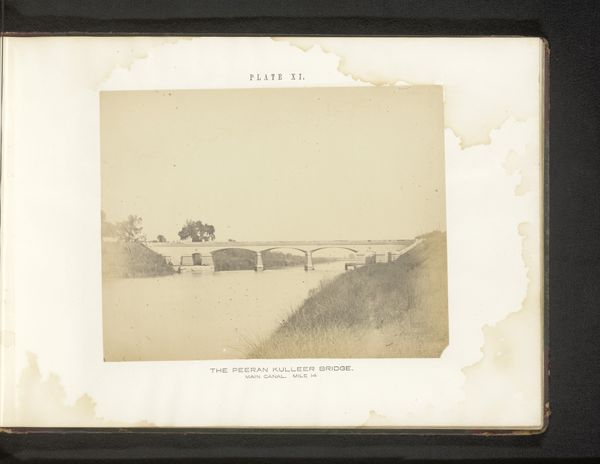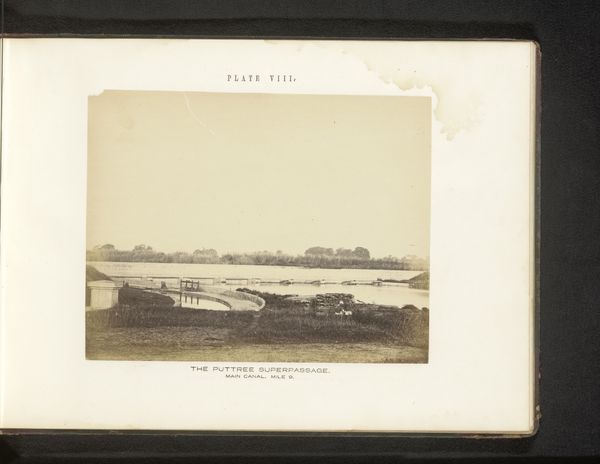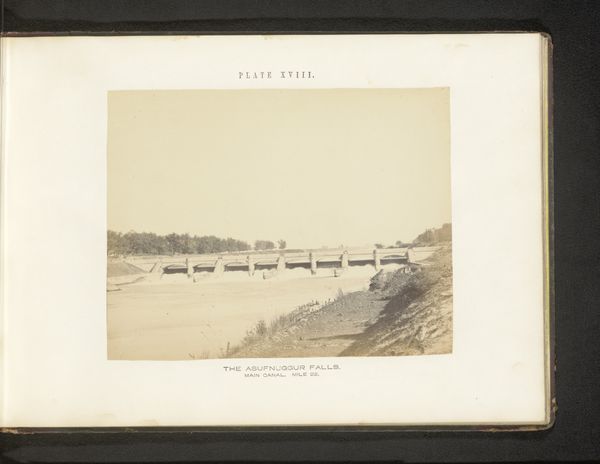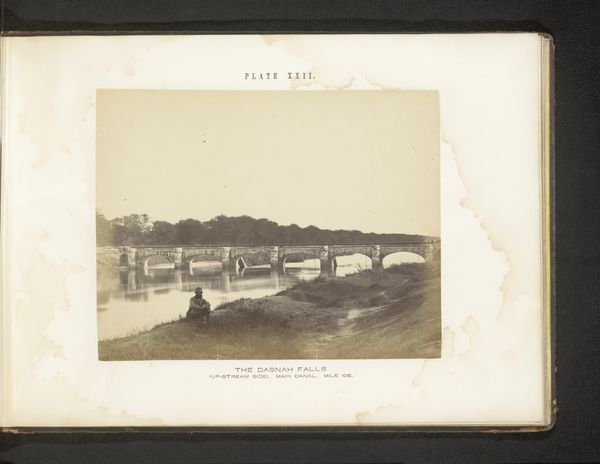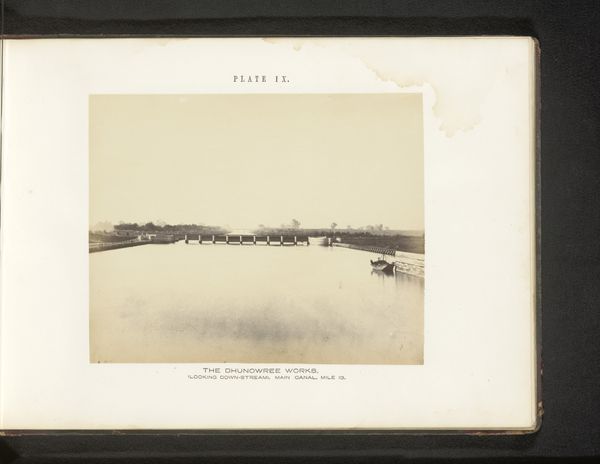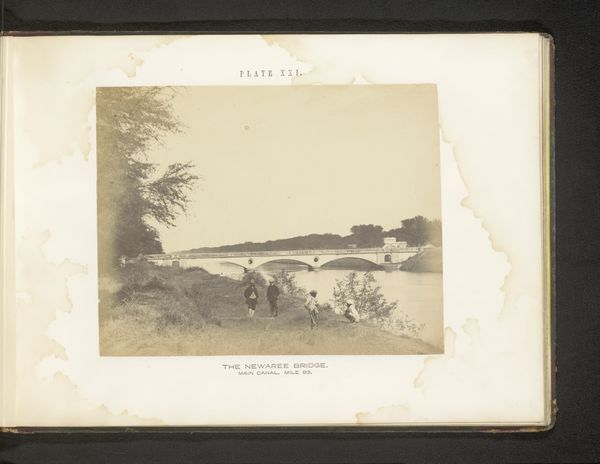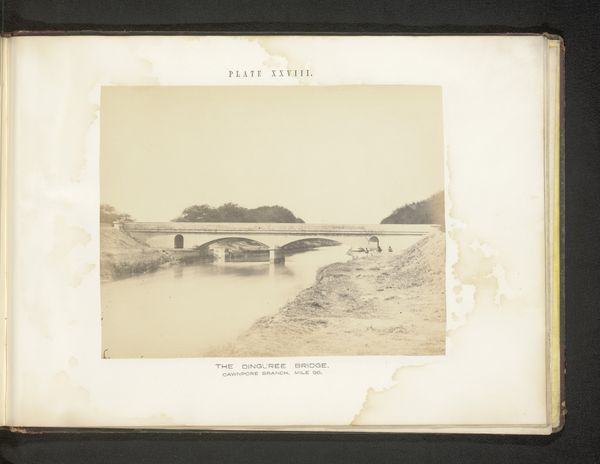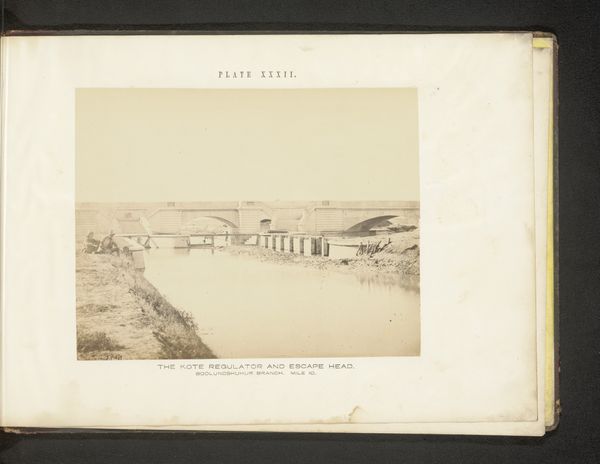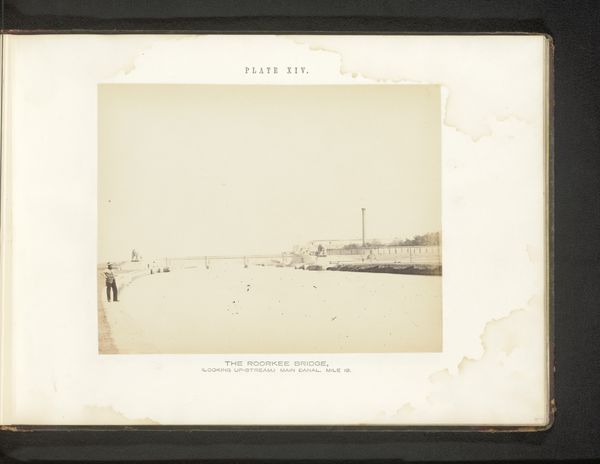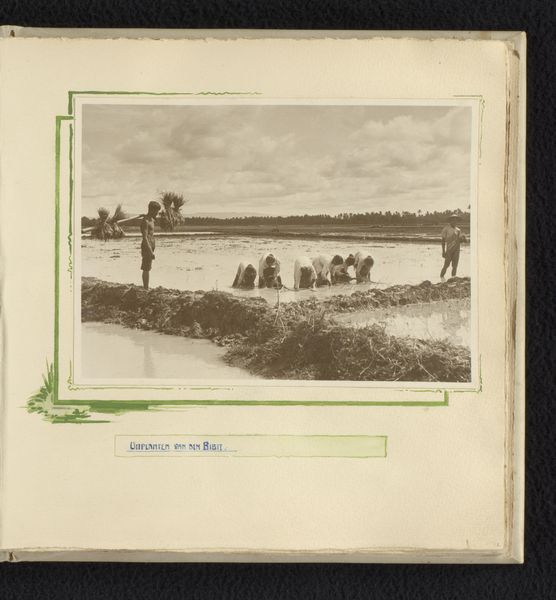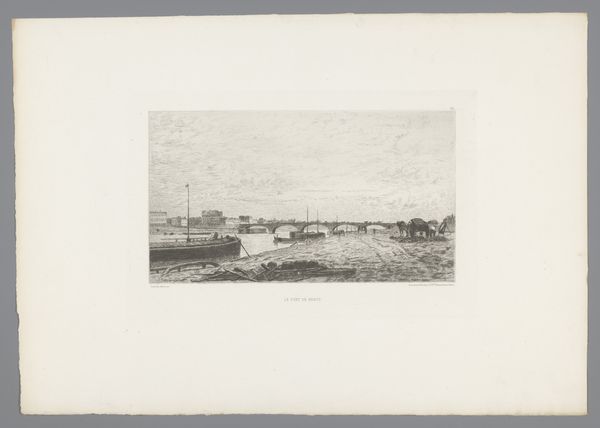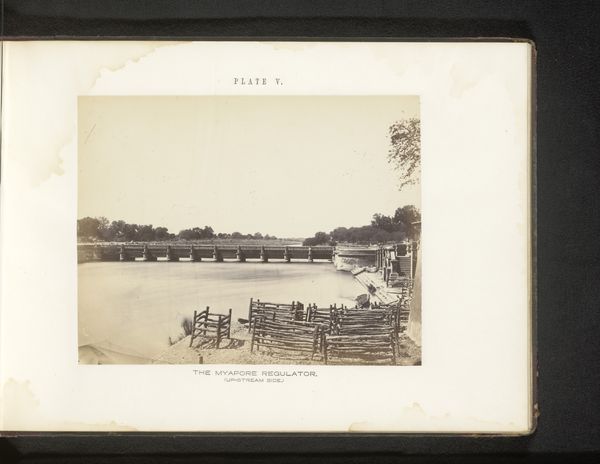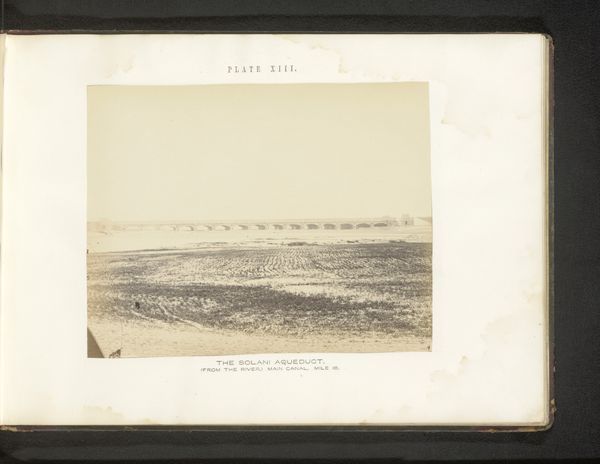
photography, gelatin-silver-print
#
landscape
#
river
#
photography
#
gelatin-silver-print
Dimensions: height 186 mm, width 234 mm
Copyright: Rijks Museum: Open Domain
Curator: Here we have a photograph entitled "Gezicht op een brug over de Ganges", which translates to "View of a Bridge Over the Ganges," dating back to before 1867. The photographer is Thomas George Glover. It's a gelatin-silver print. Editor: It’s… quiet, isn’t it? The photograph’s muted tones and expansive sky create a very still, contemplative atmosphere. The horizontal composition, emphasized by the bridge's linear form, reinforces that sense of serenity and stasis. Curator: Absolutely. The image offers a fascinating study in the geometry of landscape. Notice how Glover balances the solid, man-made structure of the bridge with the fluid, natural forms of the river and the distant vegetation. The bridge’s arches punctuate the scene, creating a rhythm that draws the eye across the composition. Editor: Yes, and thinking about the materials… That bridge represents such an imposition on the natural landscape. We can almost feel the labor involved, the sheer effort of extracting the stone, transporting it, shaping it, building that very rigid structure in that location to enable crossing, control, and ultimately, exploitation. What about the people who built that, what do we know of their efforts and hardships? Curator: A valid point. What I find remarkable is how Glover, through his choices of light and composition, almost integrates this industrial intervention back into the landscape. He doesn't hide the bridge’s materiality; instead, he allows the light to play across its surface, softening its harshness, turning the artificial into a contemplative reflection. The tones render a very flat, picturesque form in a photograph whose form mirrors the aestheticizing nature of the European colonial gaze in the mid-19th century. Editor: I agree that softening is a key function here; however, there is still tension to the composition, but the labor behind the photograph, not just of the bridge, must be remembered when discussing Glover’s choices. Overall, considering the bridge itself, I think considering it in connection with labor and process gives us an important insight into colonial landscape practice. Curator: Perhaps we've been able to tease out some ways that even seemingly quiet, aesthetically-focused photographs like this can offer broader reflections of its time. Editor: Precisely. Looking closely at its material reality and the processes involved really helps unveil further insights.
Comments
No comments
Be the first to comment and join the conversation on the ultimate creative platform.
